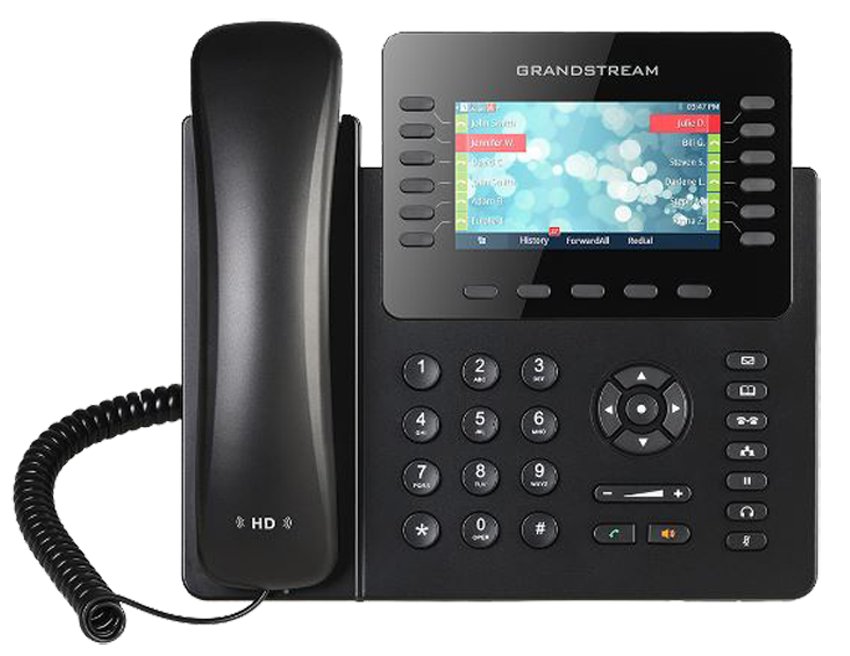In a world where business success often hinges on effective communication, one must ask: is reliable connection truly the ultimate driver of achievement, or are emerging communication technologies reshaping the game entirely? From the early days of landlines to today’s sophisticated VoIP and cloud-based systems, the evolution of business communication reflects a relentless pursuit of speed, flexibility, and professionalism. These advancements empower companies to connect effortlessly across borders, enhance customer experiences, and foster collaboration in an increasingly digital landscape. Yet, with innovation comes new challenges—security, seamless integration, and managing rapid technological change. As artificial intelligence, 5G, and immersive tools like virtual reality promise a future of hyper-personalized, instant interactions, businesses must navigate these frontiers carefully. The question remains: will these innovations cement communication as the true backbone of success, or will they redefine what it means to connect and compete? The answer lies in strategic adaptation and embracing the transformative power of technology.
Enhance Your Business Communications with FiberConX’s Reliable Solutions
Looking for a robust business phone service in Canada? FiberConX Communications specializes in VoIP and IP-based business phone services tailored to meet your needs. Our offerings include advanced features such as voicemail, IVR, ring groups, and voicemail-to-mail, ensuring seamless communication with your clients and team. Whether you’re a small startup or a large enterprise, FiberConX delivers scalable solutions designed to improve efficiency and professionalism. Contact our team today at 1.416.945.9210 or email Sales@FiberConX.com to learn more about how our business phone service can elevate your company’s communication infrastructure.

Transforming Business Connectivity: The Power of Modern Communication Technologies
In today’s fast-moving business world, effective communication isn’t just a convenience—it’s vital. Companies rely on a variety of tools to connect with employees, clients, and partners, ensuring operations run smoothly and efficiently. As organizations expand and markets grow more competitive, the importance of reliable communication systems becomes even clearer. From quick team chats to complex customer support, the right technology keeps everyone connected and informed.
The landscape of business communication has changed dramatically over the years. Traditional landline phones once served as the backbone of daily interactions, offering dependable voice connections within a fixed location. However, these wired systems came with limitations—high costs, inflexibility, and difficulty scaling as businesses grew. They kept companies tied to specific spots, making remote work or rapid expansion challenging.
The advent of Voice over Internet Protocol, or VoIP, revolutionized this environment. Instead of physical lines, VoIP converts voice signals into digital data that travels over the internet. This shift drastically reduces costs and unlocks features like call forwarding, voicemail-to-email, and video conferencing. These innovations allow teams to stay connected from anywhere—whether they’re in the office, at home, or on the move—fostering greater flexibility and responsiveness.
Modern communication platforms go beyond voice calls. Cloud-based systems enable quick setup, easy management, and effortless scalability. Businesses can add users or features without major disruptions, supporting growth and change. Features like auto-attendants and smart call routing enhance professionalism by delivering a seamless customer experience and projecting a polished brand image. Mobile integration ensures that remote teams can collaborate and respond in real time, regardless of location.
Security and compliance have also become central to effective communication. Advanced systems now incorporate encryption, call recording, and data protection tools to safeguard sensitive information. These features help organizations meet industry regulations and build trust with customers, especially in sectors like healthcare and finance where data security is non-negotiable.
The evolution of communication technology is shaping not only how businesses connect but how they operate overall. Reliable, sophisticated systems support faster decision-making, better customer engagement, and resilient workflows. As technology advances, organizations that adapt will find it easier to stay competitive, grow their reach, and innovate in a rapidly changing environment. Connecting people isn’t just about technology—it’s about laying a foundation for long-term success.
From Landlines to Global Networks: The Evolution of Business Communication
The story of business communication is a continuous journey driven by the need for faster, clearer, and more reliable connections. It all began with the invention of the landline phone, which transformed office interactions by providing an instant voice link between colleagues and clients. These wired systems brought simplicity and dependability, but their fixed locations and high setup costs limited flexibility and expansion, keeping businesses tied to specific sites.
As the 20th century progressed, a major shift occurred with the rise of Voice over Internet Protocol (VoIP). Replacing traditional phone lines, VoIP converts voice signals into digital data that travels over the internet. This innovation drastically cut communication costs and introduced features like call forwarding, voicemail-to-email, and video conferencing, making remote and mobile connectivity a reality for many organizations. It marked the beginning of a new era where flexibility and efficiency became central to business communication.
The evolution didn’t stop there. The proliferation of mobile phones expanded connectivity beyond the office walls, enabling employees to communicate on the go. Simultaneously, video conferencing platforms emerged, allowing face-to-face interactions across distances that previously seemed impossible. Cloud-based systems further transformed the landscape, offering scalable, easy-to-manage solutions that could grow with a business’s needs, breaking down geographical barriers and fostering global collaboration.
Market demands and societal shifts accelerated this progression. As digital interactions became embedded in daily life, businesses faced increasing pressure to deliver instant, high-quality communication. This led to widespread adoption of internet-based systems that prioritized cost-effectiveness, flexibility, and rich feature sets. Early pioneers like Cisco and Avaya set foundational standards with enterprise telephony, while platforms like Skype and Google Voice made VoIP accessible to smaller organizations, democratizing reliable communication.
Looking back, each step in this evolution reflects a desire to overcome limitations and expand possibilities. From the simplicity of landlines to sophisticated cloud solutions, the focus has always been on making connections faster, clearer, and more adaptable. This ongoing journey has laid the groundwork for today’s advanced communication systems—integral to how businesses operate, compete, and thrive in a connected world.

Revolutionizing Customer and Internal Interactions with Advanced Phone Services
Today’s business communication landscape is more dynamic and integrated than ever before. Voice over Internet Protocol (VoIP) and cloud-based platforms have become standard tools, offering a suite of features that elevate professionalism and operational efficiency. Companies now automate call handling with auto-attendants, ensuring every customer is greeted promptly and routed to the right department. Advanced call routing reduces wait times and enhances the customer experience, while mobile integration keeps teams connected regardless of their location.
VoIP, in particular, dominates the market for business phone services. By transmitting voice data over the internet, it significantly cuts costs and unlocks features like voicemail-to-email, video conferencing, and real-time analytics. Cloud-based solutions are especially popular because they’re easy to manage and scale. Businesses can effortlessly add new users or features without disrupting existing operations, supporting growth and agility in a competitive environment.
These modern communication tools do more than facilitate calls—they transform customer interactions and internal workflows. Automated attendants create a professional first impression, guiding callers smoothly through their journey. Smart call routing ensures inquiries reach the appropriate person on the first try, reducing frustration and increasing satisfaction. Mobile features allow staff to check voicemails, participate in meetings, or handle calls from their smartphones, supporting flexible work arrangements and remote collaboration.
Adopting these systems requires careful planning around internet infrastructure and security. Cloud solutions offer scalability and quick deployment but demand reliable internet connectivity to maintain call quality. Security measures like encryption and data protection are essential, especially for sectors handling sensitive information. Proper vendor selection and ongoing management help ensure these platforms integrate seamlessly with existing tools and comply with industry regulations.
While these advancements bring impressive benefits, they also pose challenges. Ensuring consistent internet reliability is crucial for maintaining service quality. Integrating new communication platforms with customer relationship management (CRM) or enterprise resource planning (ERP) systems can require technical expertise. Regular updates and security audits are necessary to safeguard data and stay compliant with evolving regulations.
Ultimately, modern business phone services are a cornerstone of competitive advantage. They enable faster decision-making, richer customer engagement, and resilient workflows. As technology continues to evolve, organizations that leverage these tools effectively will be better positioned to adapt, grow, and succeed in a fast-changing digital world. The key lies in choosing the right solutions and continuously optimizing them to meet both current demands and future opportunities.
For businesses looking to explore these options further, discovering how unified communication systems can enhance overall efficiency is essential. To learn more about implementing advanced phone services, visit unified communication systems and see how they can transform your organization’s communication landscape.
Strategic Success: Mastering Tools, Techniques, and Mindsets for Effective Business Communication
To get the most out of modern communication systems, organizations need to approach them strategically, combining practical tools with the right mindset. Clear protocols for handling calls, greetings, and inquiries help ensure consistency and professionalism across all interactions. Regular training sessions empower staff to confidently use new features like auto-attendants, call routing, and mobile apps, leading to smoother workflows and better customer experiences.
Choosing the right tools begins with understanding your organization’s specific needs. Prioritize features such as scalability, security, and seamless integration with existing systems like CRM or ERP platforms. Partnering with reliable vendors and involving IT experts during setup minimizes technical hurdles and helps tailor solutions to your business. Once in place, ongoing performance monitoring and listening to user feedback are key to refining processes and ensuring the system remains efficient and user-friendly.
As technology advances, so do the opportunities for innovation. AI-powered virtual assistants can manage routine inquiries, freeing staff to focus on complex or high-value interactions. Video messaging and real-time transcription improve clarity and accessibility, especially for remote or international teams. Emerging tools like augmented reality (AR) and virtual reality (VR) are starting to revolutionize virtual meetings, creating immersive experiences that strengthen remote collaboration and engagement.
Security and compliance must be woven into your communication strategy from the start. Implement encryption, strict access controls, and regular audits to protect sensitive data. Training employees on best security practices reduces human errors and fosters a culture of vigilance. When security features are integrated seamlessly, they support growth without becoming obstacles, helping your organization adapt confidently to evolving regulations and threats.
Flexibility and resilience are essential in today’s fast-changing environment. Cloud-based solutions excel here, allowing quick scaling and adaptation to new demands. Setting up disaster recovery plans—such as automatic call rerouting or backup systems—ensures that communication remains uninterrupted during outages or crises. Building a robust infrastructure lets your team respond swiftly to challenges, maintaining service quality and customer trust.
Finally, maintaining a proactive mindset is vital. As communication tools evolve, continuous learning and adaptation become part of your organizational culture. Regularly reviewing and updating protocols, investing in staff development, and staying informed about emerging technologies keeps your systems aligned with your goals. This approach turns your communication infrastructure into a true strategic asset, supporting better collaboration, stronger customer relationships, and sustained growth in a competitive landscape.

Charting the Future: Trends and Innovations Shaping Business Communication Ahead
Looking ahead, the future of business communication is set to become more integrated, intelligent, and secure than ever before. Advances in artificial intelligence, machine learning, and 5G technology will enable companies to deliver highly personalized, efficient interactions with both customers and employees. Automated systems will handle routine inquiries with increasing sophistication, freeing human agents to focus on complex, value-added tasks that require genuine expertise. Meanwhile, immersive tools like virtual and augmented reality are poised to revolutionize remote meetings and product demonstrations, creating experiences that feel almost real and bridging distances more effectively than traditional video calls.
Security and data privacy will remain at the forefront as these platforms become more advanced. Developments in encryption, blockchain, and other cutting-edge measures aim to bolster trust and transparency, making it easier for organizations to safeguard sensitive information without sacrificing accessibility. Companies that stay ahead of these innovations will be better equipped to protect customer data, comply with evolving regulations, and demonstrate a genuine commitment to privacy—an increasingly vital aspect of reputation and trust.
Real-time data analytics will play an even larger role in shaping communication strategies. Organizations will harness insights gained from every interaction to personalize services, anticipate customer needs, and make proactive decisions. This shift toward data-driven communication demands investments in the right tools and a culture of continuous learning, but it promises to make every touchpoint more responsive, relevant, and effective.
The rollout of 5G connectivity is expected to transform remote collaboration. Faster speeds and lower latency will support seamless, high-quality video, instant data sharing, and virtual meetings even in areas with previously limited connectivity. This leap will foster truly borderless workplaces, where geographical boundaries matter less than ever, enabling distributed teams to work together as if they were in the same room and accelerating the pace of innovation.
Organizations that embrace these trends early will gain a competitive edge by fostering stronger relationships through secure, personalized, and engaging communication channels. They will also operate more efficiently across borders, leveraging automation and real-time insights to adapt swiftly to changing markets. As the tools evolve, the core purpose remains the same: connecting people in ways that drive growth, innovation, and resilience.
The way we communicate in business might change in form, but the goal stays constant—building meaningful connections that propel organizations forward. Recognizing the importance of adaptability, investing in emerging technologies, and prioritizing security will be key to turning these future trends into tangible advantages. Companies that understand this will not only survive but thrive in an increasingly digital landscape.
The next chapter of business communication is being written today. Those willing to innovate and evolve will shape how their organizations grow, compete, and succeed in a rapidly changing world. It’s not just about keeping pace; it’s about leading the way, transforming challenges into opportunities, and turning communication into a true strategic asset. The future is arriving fast—are you ready to embrace it?







